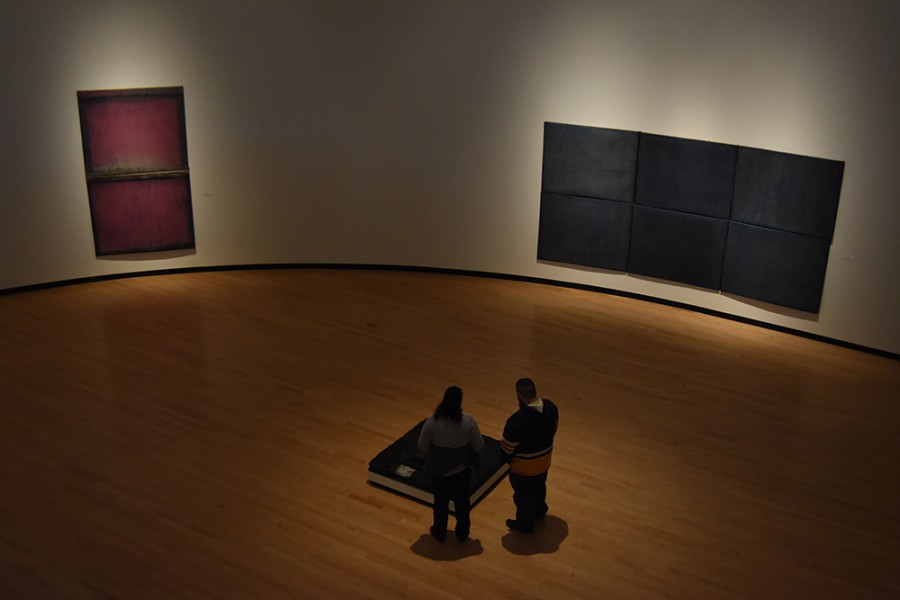Buffalonian Drummer’s work returns to the Burchfield Penney
Drummer’s work is on display until Sunday, June 12.
March 9, 2016
Jack Drummer’s artwork has been called “dirty” and “minimalist,” but the overall effect of his work, much of which is stretched rubber imprinting anything under it, and then sanded, ripped, stitched, painted over with tar, or sprayed with water or iron oxide, is seen as sublime.
Born in 1935 in Buffalo, Drummer took off from his roots, a big family of about six to eight siblings, to find success in New York City. Upon arriving, he was immediately noticed, and layered with praise.
According to an anecdote, Drummer walked into a bar and after a discussion with the bartender, also a native Buffalonian, said “It’s too easy!” and left the scene to live in Hawaii where his work with palm materials were unfortunately never saved from decomposition, and are no longer with us.
Neither is Drummer.
Passing away in 2013, much of what is left of Drummer is his work now on display at the Burchfield Penney Art Center.
“Those rubber paintings are rubber off set printers,” said Tom Hayduk, a tour guide at the center. He showed viewers around the museum Saturday, and gave a detailed description on Drummer, as well as other artists featured in the gallery. “I think he just walked around places and scooped up buckets (of materials).”
“He was against being categorized, being pigeonholed, he wanted to be his own man, whether it be a slob, drink a lot, or be a society person, and you can see it in his work,” Hayduk said. “You can see how he really didn’t (want this). He was on the abstract scene, he was what was happening, and he did it his own way.”
After leaving New York, Drummer lived in Hawaii for about 10 years, but after escaping the spotlight, he was not heard of.
“He did his artwork, but he lived on the beach. There is very little, he did not keep journals, so there’s very little that we know of him,” Hayduk said.
Drummer is considered an important part of Buffalo history, and is a welcome addition to the halls of Burchfield. Hayduk said that if you had any connection to Western New York, as an artist, you could find yourself displayed here. When it comes to Drummer, the heart he puts into his work makes him a fine example of Buffalonian art. You can see the bugs that got stuck in the tar, you can smell it.
“He’s sanding down to a point, to where he says, now this is what I want,” Hayduk said. “If you look close into the pieces you can actually see what we originally material that was supposed to be printed, there’d be like advertisements underneath all of this sand.”
Drummer did a lot of his work in an old theater on Connecticut Street. While Drummer was popular, he wasn’t fed by his artwork.
“Sustained spiritually maybe, he wasn’t sustained financially. From what I know he wasn’t. He got social security, he had friends who supported him,” Hayduk said. “He had real relationships with people, he wasn’t a recluse but he wasn’t a kiss-up either.”
Despite his handicaps, and perhaps from them, Drummer threw himself into his work.
“This is like meditational, to do all these stitching,” said Hayduk, pointing to a large rubber canvas with tears ripped then re-sewed. “It’s like, you turn off everything… and you just put in these stitching… he was trying to create petals, flowers. What’s left unsaid is almost as important as what he said.”
email: [email protected]



